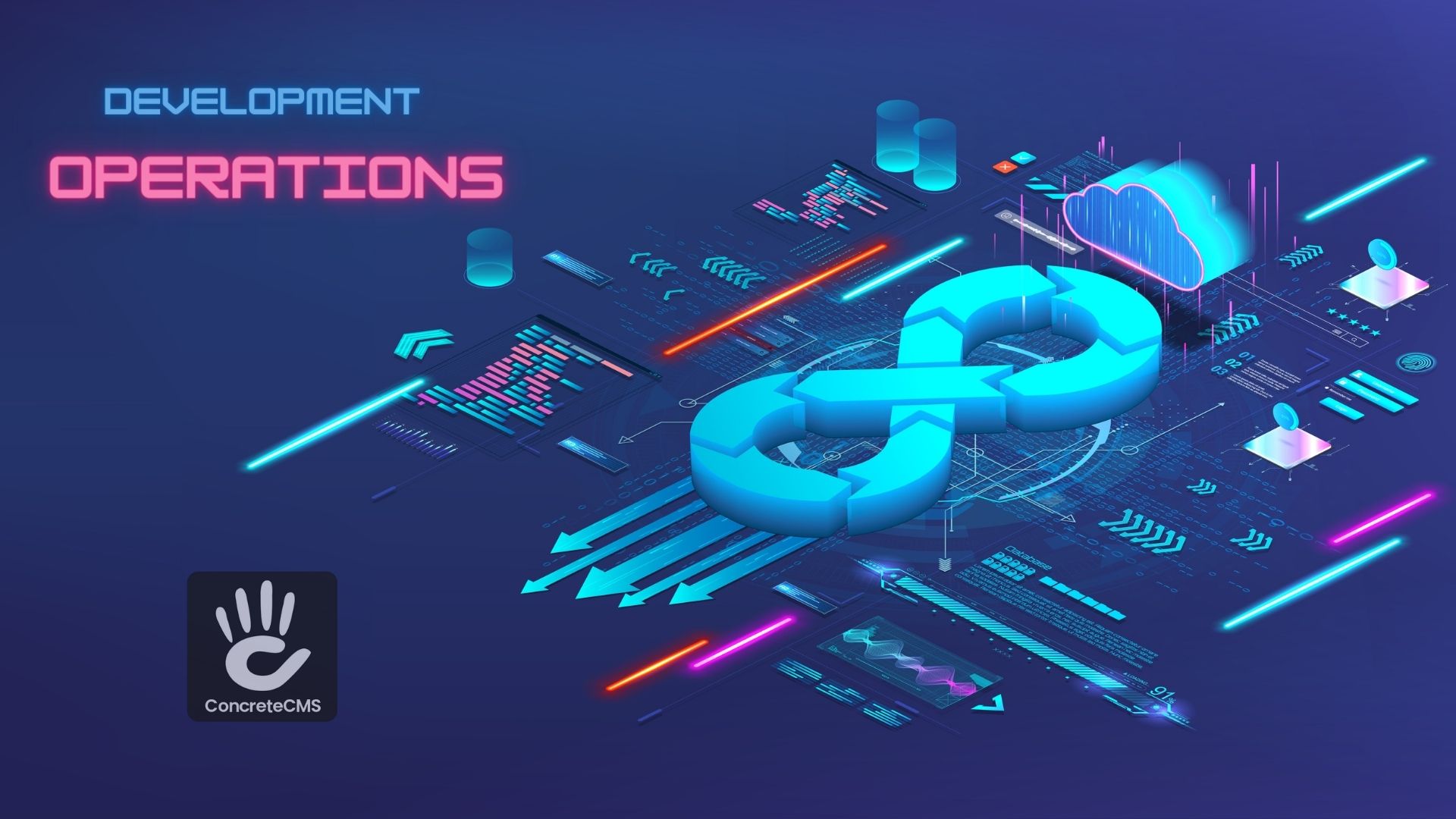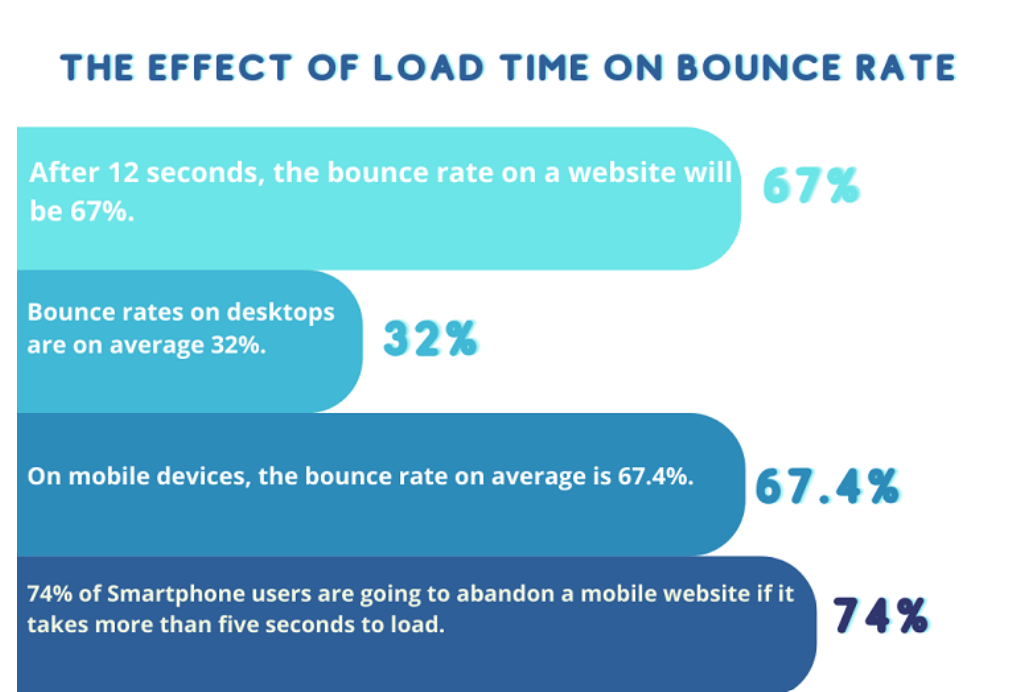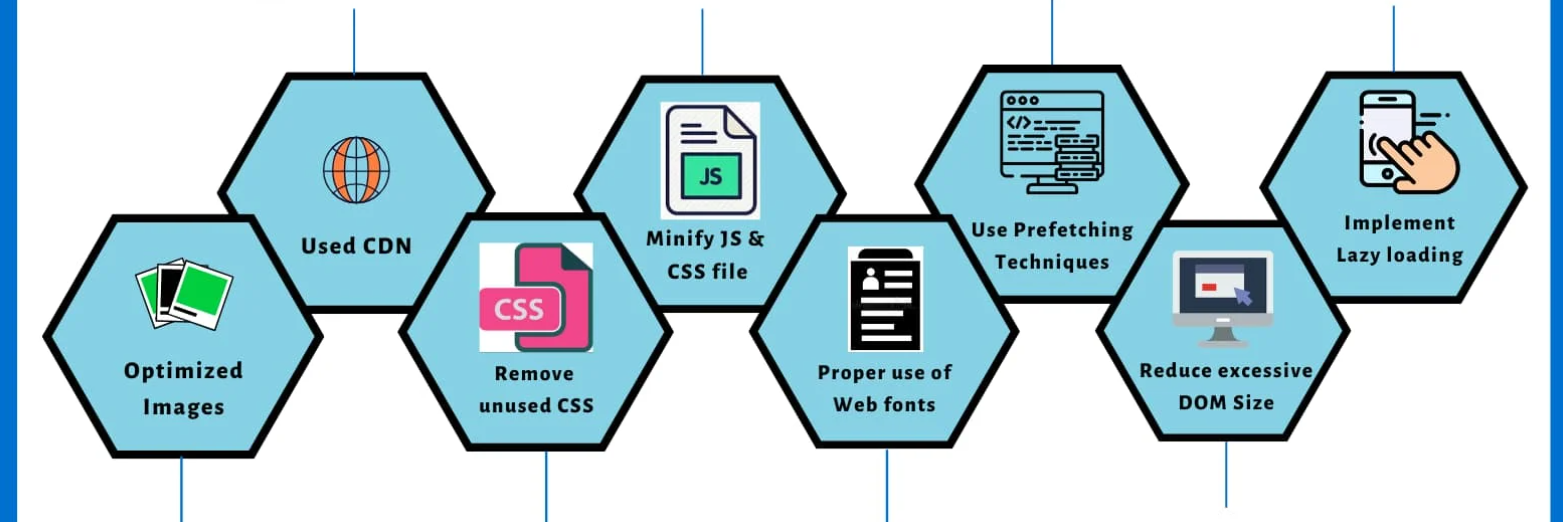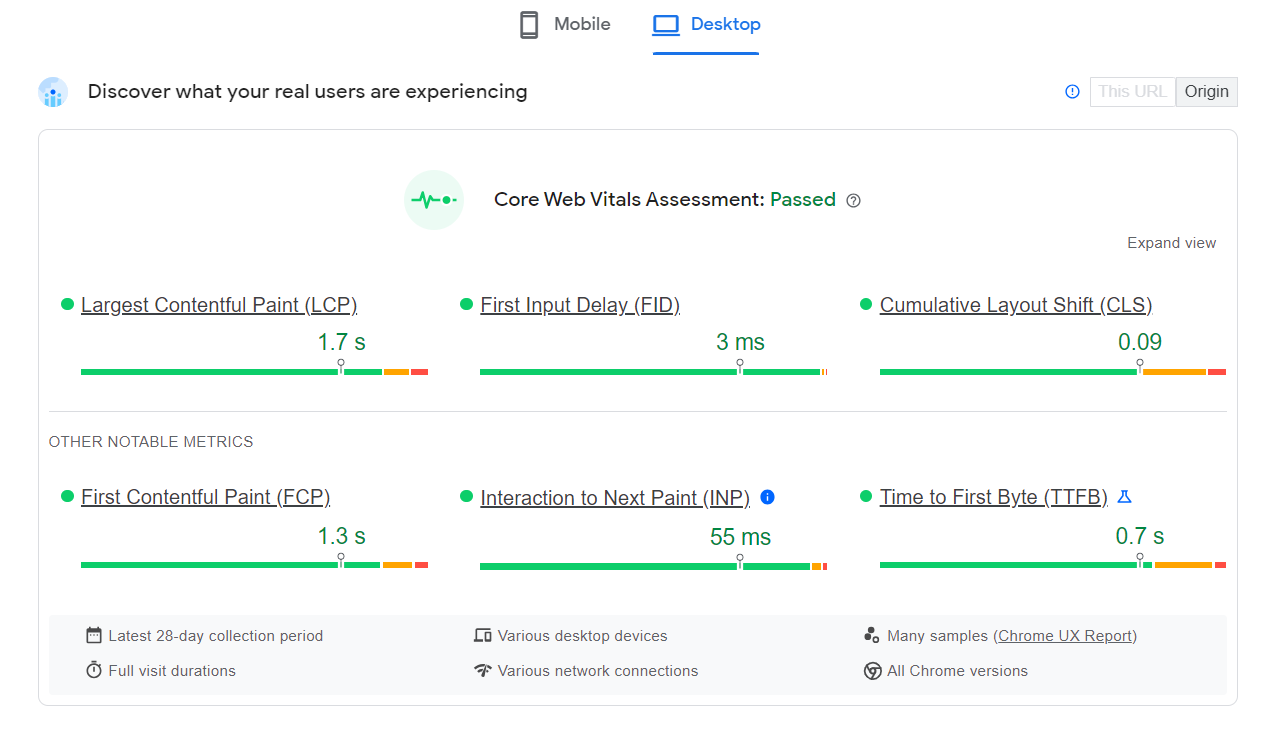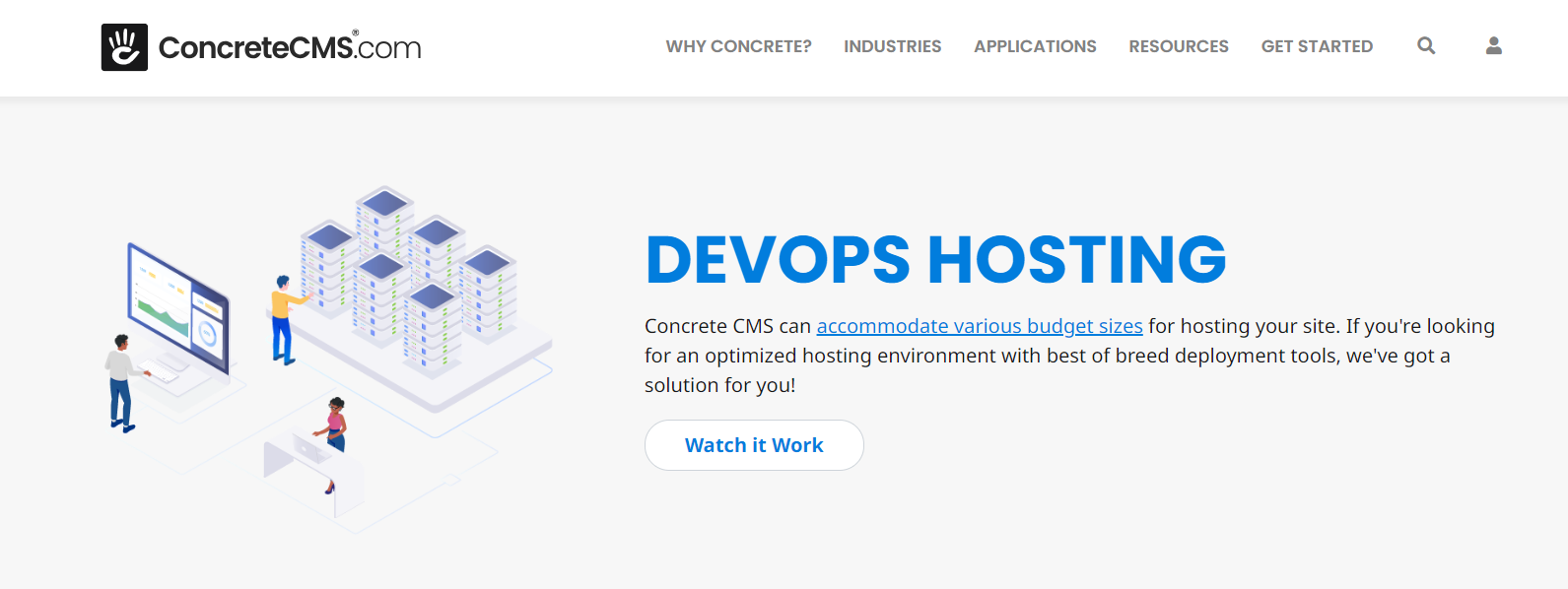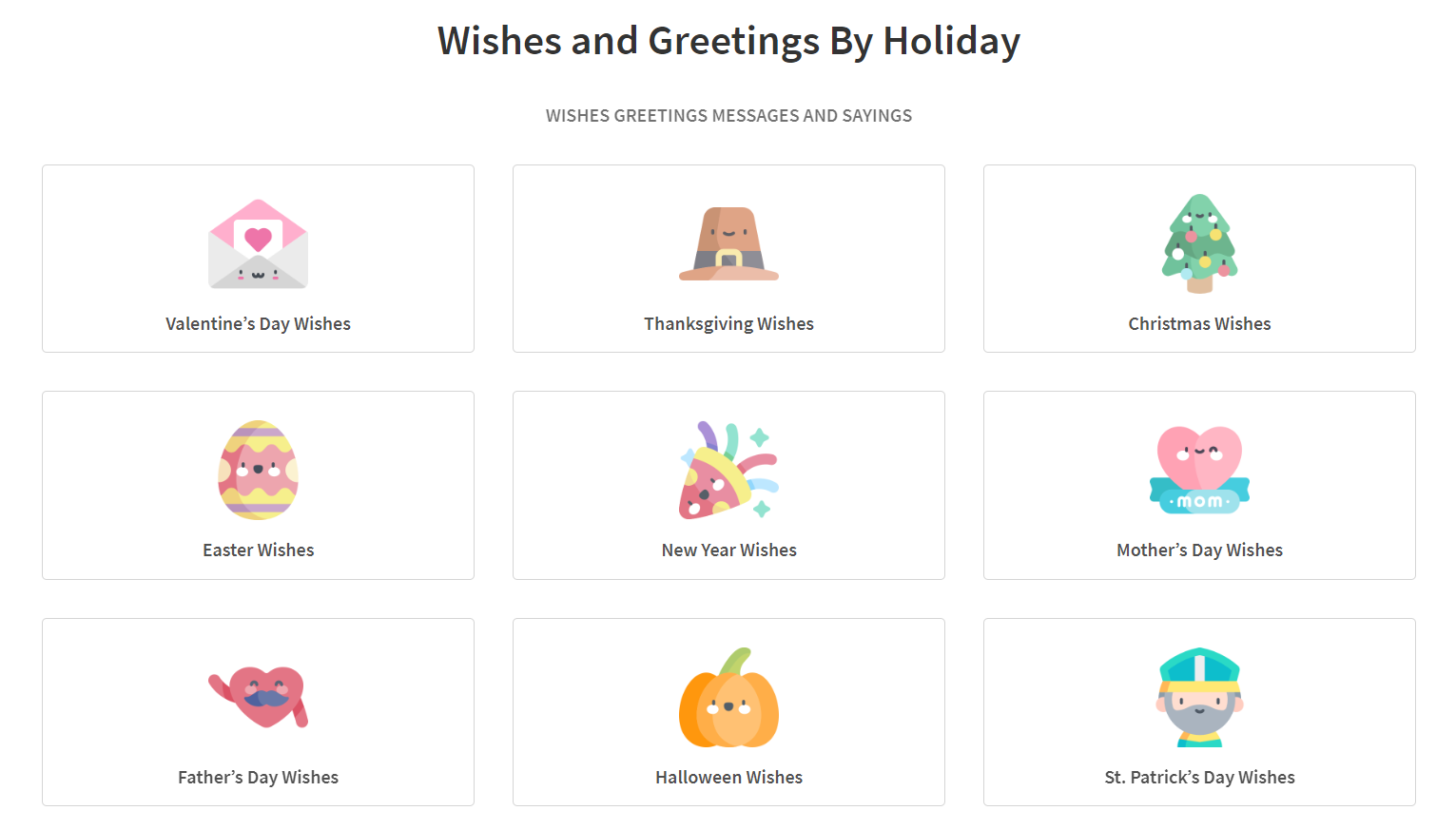Is your website lagging? Aren’t you getting enough traffic and engagement? You’re at the right place as we’ll discuss 12 website performance optimization hacks to help you speed up your site for more traffic, conversions, and sales. If your website’s loading speed is 1 second, your chances of conversions are 3 times higher compared to a site that takes 5 seconds to load.
Website performance optimization stands as the cornerstone of online success. It's not just about rapid page load speeds; it's about delivering an unforgettable user experience that entices and retains prospects.
When your website performs at its peak, real users don't just browse; they engage, connect, and most importantly, convert. A streamlined site translates to higher user satisfaction, and in the business realm, this directly increases conversions and a promising Return on Investment.
In this article we'll talk about modern image formats, the power of CDNs to refine critical CSS, and harnessing browser caching, each segment is crafted to provide actionable insights. As we navigate through each section, we'll uncover strategies that align technology with user expectations, ensuring your website stands out in 2023.
What Is Website Performance Optimization
Website performance optimization refers to the process of improving the way a website loads and operates, ensuring a smooth and swift experience for users. It involves techniques and best practices designed to reduce page load times, enhance responsiveness, and improve overall website functionality.
Several reasons make website performance optimization crucial:
- User Experience (UX): Faster websites offer better user experiences. A site that loads quickly and functions without hitches can retain visitors longer, reducing bounce rates.
- Search Engine Optimization: Google and other search engines consider page load times and overall website responsiveness as ranking factors. SEO-optimized sites are more likely to appear higher in search results.
- Conversion Rates: A well-performing website often sees higher conversion rates. Users are more likely to make purchases, sign up for newsletters, or engage in other desired actions on a site that offers a seamless experience.
- Mobile User Engagement: With the increasing number of mobile users, optimizing website performance for mobile devices is essential. A fast-loading, responsive site can capture and retain mobile traffic effectively.
- Bandwidth and Hosting Costs: Optimized sites use resources more efficiently, often reducing hosting costs and bandwidth usage.
The good news is that you can easily improve your loading time with the correct website performance strategies at hand. Let’s have a closer look at what they are and how they’ll help you deliver an exceptional user experience that keeps customers coming back for more.
12 Proven Website Performance Optimization Strategies To Implement
Slow websites are a relic of the past. If your site isn't firing on all cylinders, you’re leaving user satisfaction and revenue on the table. A well-optimized website enjoys increased visitor retention, higher conversions, and better overall user satisfaction. Ready to elevate your site? Let’s dive into these detailed strategies.
Code Minification
While coding, developers use spaces, comments, line breaks, and long variable names to make the code files readable and maintainable. However, web browsers and servers don't need these elements to execute the code. Minification is the process of removing all these unnecessary characters and extra spaces from the source code.
This gets you a much more compact version of the original code. For instance, it could transform a neatly written and spaced-out CSS, HTML, or JavaScript file into a single line of seemingly crunched text. Using tools like UglifyJS for JavaScript or CSSNano for CSS, the process becomes a breeze. By embracing minification, you're taking a significant step toward a zippier website.
Three main benefits of minifying code are:
- Efficient parsing
- Faster load times
- Reduced bandwidth
To understand the concept better, let’s analyze this medical alert systems’ website using speed test tools like Google PageSpeed Insights. The website at hand passed the performance audit as it has minified CSS and JavaScript in addition to other best practices like deferred offscreen images in next-gen formats, text compression, and offering pre-connect to required origins, etc.
Upgrade To HTTP/3 Protocol
In the digital highway, HTTP/3 is the newest express lane. It improves upon HTTP/2, especially in establishing faster, more secure connections. You utilize advanced connection multiplexing by upgrading, reducing the overall load times and enhancing security. It's like giving your website an express ticket on the internet superhighway.
You can upgrade to the HTTP/3 Protocol with the following steps:
- Assess Your Current Setup: Make sure you understand your existing web infrastructure, including the web server software you're using.
- Select a Supportive Web Server: Not all servers support HTTP/3 yet. Choose a server that does, such as NGINX or LiteSpeed.
- Acquire Necessary Plugins or Modules: Some servers may require additional complex plugins or modules to enable HTTP/3.
- Update Server Configuration: Modify the server configuration to enable HTTP/3, typically through the private server's settings or a configuration file.
- Enable QUIC: Since HTTP/3 operates over the QUIC protocol, make sure it's activated. This might be part of the HTTP/3 setup or a separate step, depending on the server.
- Update TLS: Ensure you're using TLS 1.3, as HTTP/3 requires it for secure connections.
- Test the Configuration: Once set up, use online tools or browser dev tools to confirm that HTTP/3 is active and functioning.
- Monitor Performance: After the upgrade, regularly check your website's performance to make sure everything runs smoothly and to leverage the benefits of HTTP/3.
- Stay Updated: As with all protocols, HTTP/3 will evolve. Regularly update your dedicated server software and related components to benefit from the latest enhancements and security patches.
- Harness The Power Of CDNs
The internet has condensed various aspects of business, from online storefronts to inventory management. However, despite the world feeling more connected, physical distance still affects website speed.
CDNs (Content Delivery Networks) bridge this gap. They store cached versions of your site across a network of global servers. Users access your site from the nearest server location, reducing the distance data travels.
The result? Uniformly fast website access, regardless of geographical location. For instance, an image will load just as quickly for someone in Tokyo as it does for a user in New York, eliminating the lag caused by geographical distance.
Decrease Time To First Byte (TTFB)
Imagine knocking on a door. The faster it opens, the quicker you can proceed. Your server is that door online. For every one-second delay in your server response, user anticipation turns to frustration. The Time to First Byte (TTFB) is the time taken for a user's browser to receive the first byte of data from the server. A lower TTFB means your website starts loading faster, leaving a positive impact on users.
Here's how you can minimize it:
- Gzip compression can reduce the size of data the server sends, speeding up TTFB.
- Keep your origin server software, like Apache or Nginx, updated. Modern versions often come with performance improvements.
- Each middleware your server runs through before sending data can be added to TTFB. Only use necessary middleware components.
- Keep your database tidy. Regular maintenance, query optimization, and the use of efficient database structures can speed up data retrieval times.
- Limit the amount of dynamic calculations the server has to perform. Use caching solutions so that fully rendered versions of your pages are served without the need for real-time processing.
For instance, the server response time of this hiring website for startups is ideal as it loads under 100 milliseconds. On the other hand, server response time longer than 1 second is considered too slow and will increase the bounce rate.
Select The Right Hosting Service
Begin by assessing your site's current and projected traffic, resource consumption, and specific requirements like SSL certificates or specific software support. Regularly monitor performance metrics and adjust your hosting plan as needed.
Always have a contingency plan for traffic spikes. Understanding technical jargon like bandwidth, uptime, SSD vs. HDD, and CDN integration will empower you to make informed decisions when selecting or upgrading your hosting solution.
Consider Black Friday sales. Websites like Amazon or Best Buy expect a massive surge in traffic. Just as a major concert venue plans for huge crowds by hiring extra security and opening additional entry gates, these eCommerce giants anticipate the spike and upscale their hosting resources.
If they stuck to basic shared hosting, it would be like cramming a stadium's worth of fans into a small club — the site would crash. Therefore, understanding vertical and horizontal scaling options hosting providers give, such as cloud-based solutions, becomes critical for such scenarios.
Remember, in the digital realm, even a few seconds of delay will hurt your user retention and conversion rates. Digital Creators Invest wisely in hosting solutions – it's the foundation of your website's user experience.
If you’re a newbie, try getting help from website performance experts, resources, and podcasts. Download free PDF books on website performance and optimization to help you decide better on your hosting needs.
Optimize Database Queries
Behind dynamic websites are databases, constantly queried for information. Optimized queries pull data swiftly, ensuring your pages populate in real time. Regularly refine these requests, indexing real-time databases and removing any redundant queries. The smoother your database operations, the quicker your site responds to user interactions.
Here are 6 steps to optimize database queries:
- Index commonly queried columns to speed up the search.
- Periodically remove outdated or unnecessary data from your database.
- Store frequently accessed query results in the cache to reduce repeated database hits.
- Use tools like "EXPLAIN" (in SQL databases) to understand and improve query performance.
- Ensure you're using the latest version of your database software for performance improvements and bug fixes.
- In ORM (Object-Relational Mapping) tools, avoid scenarios where querying one item leads to additional queries for related items.
- Optimize Image Format & Size
Images are indispensable for modern websites, adding aesthetics and aiding in storytelling. A high-resolution image can be several megabytes in size. When multiple images load on a webpage, they can create a performance issue causing slow load times. Optimized image sizes strike a balance between visual quality and performance.
Here are the key factors to optimize your images for a faster loading time:
- Resizing: Before uploading, resize images to the maximum display size needed. No point in using a 4000px wide image if it will only display at 800px on your site.
- Compression: Tools like TinyPNG or JPEGmini can reduce image file size without discernible quality loss. Depending on the file type, compression removes unnecessary data.
- Format Choice: Use modern formats like WebP or AVIF that provide good quality at lower file sizes compared to traditional JPEG or PNG.
- Responsive Images: Implement responsive image techniques, where the browser chooses the best image size based on the user's device.
These image optimization hacks are especially crucial for eCommerce shops like this solar power system website where visual representation is key. Each page showcases a diverse range of products, each with multiple images – a main shot, close-ups, product-in-use shots, and perhaps even a 360-degree view.
These product-selling websites compress their photos’ JPEG format (500kb) down to WebP (250kb) to tackle slow loading, all without sacrificing clarity.
But they don’t stop there. They also implement WebP for the thumbnail gallery of each product. This means when an online customer clicks on a product, not only does the main image load faster, but the gallery below it pops up almost instantaneously. This transformation not only enhances customer satisfaction but also boosts the chances of sales conversions.
Prioritize Above-The-Fold Content
What visitors see first sets the tone. The content they view without scrolling, known as 'above-the-fold', should be compelling and fast-loading. This doesn't mean cramming all your best content there but being strategic. Use engaging headlines, key visuals, and essential call-to-actions. Combine these with fast-loading assets and you create a perfect blend of engagement and performance, encouraging users to explore further.
Let’s consider this website for finding cheap tickets. Here’s how they’ve prioritized above-the-fold content to improve user experience, page load, and download times:
- Provide a flight search box right on the homepage to save travelers’ browsing time.
- Instead of a high-resolution hero image on the homepage, they use a lighter, optimized background with a clear focus on the search box.
- The search box styling (CSS files) loads immediately and defers non-essential scripts that don't affect the initial flight search.
- Use web fonts wisely so they don't delay the loading of key text (e.g., "Search Flights").
- Display main elements like the flight search box, primary navigation, a signup CTA, a brand logo, and utilize a user-friendly logo maker for easy customization. Avoid clutter like excessive promotions or ads.
Web Font Optimization
Custom fonts make websites unique, but excessive font weights and styles are performance bottlenecks that delay rendering. Curate your font selection. Choose only the necessary weights and styles. Reduce the number of font files loaded, so you can drastically cut down on render-blocking resources. This ensures text appears promptly and beautifully.
For niche-specific websites, such as an athlete's footwear boutique or a luxury lingerie store, the ambiance and aesthetic are crucial to attracting and retaining the target audience. Custom fonts play an instrumental role in creating this bespoke atmosphere, infusing personality into every web page. However, incorporating a multitude of font weights and styles can inadvertently hinder page rendering times.
This delay, even if minor, can deter potential customers, and cause them to leave your website without making a purchase. Curate font selections and focus only on essential weights and styles. Ultimately, these specialized sites can ensure swift, seamless loading, ensuring visitors are immediately immersed in their unique brand experience.
Streamline Animations
Animations make websites dynamic. However, overdoing them or poorly coding them can make a site sluggish. Focus on smooth, purposeful animations that enhance user input. Whether it's a subtle hover effect or a transition, ensure they're optimized for performance, adding to the user experience rather than detracting from it.
Let’s take a look at the Styiens’ homepage with an impressive animation performance, making interactions intuitive and engaging, and that without compromising on speed or responsiveness. From hover effects to smooth transitions, every motion is meticulously optimized to strike a balance between aesthetics and performance. This not only evades the lag often associated with over-embellished sites but also enriches the user experience.
Leverage Browser Caching
A return visit to your site should be even swifter than the first. Browser cache remembers previously loaded resources. Leveraging browser caching is like giving visitors a "shortcut" for faster webpage loading on repeat visits. When someone first visits a site, elements like images, stylesheets, and scripts get stored in their browser's local cache.
On subsequent visits, the browser recalls these elements from its cache instead of re-downloading them from the hosting server for quicker page loads. You can set proper cache-control headers. The webmasters dictate how long these files remain in the cache, optimizing repeat user experiences.
Optimize For Mobile Devices
The mobile web isn't the future; it's the present. With more users browsing on the go, a site optimized for a mobile version is crucial. Implement responsive design, touch-friendly elements, and streamlined assets for mobile. Regularly conduct performance tests across various device types, ensuring mobile users get an equally fantastic experience.
With more than half of global web traffic coming from mobile, it's not just about looking good, but about retaining and converting mobile users effectively. Optimizing for mobile devices ensures your website performs seamlessly on smartphones and tablets. The problem here is: that a website's desktop version won't always suit mobile devices.
Given today's mobile-centered world, a site should load quickly, display correctly, and be easily navigable on smaller screens. This involves responsive design, where the site adjusts to varying screen sizes.
Moreover, eliminating resource-heavy elements that might slow down mobile load times can result in a poor user experience. Regularly evaluate performance scores across various device types, ensuring mobile users get an equally fantastic experience. This improved website and app performance can improve sales, customer loyalty, and overall business success.
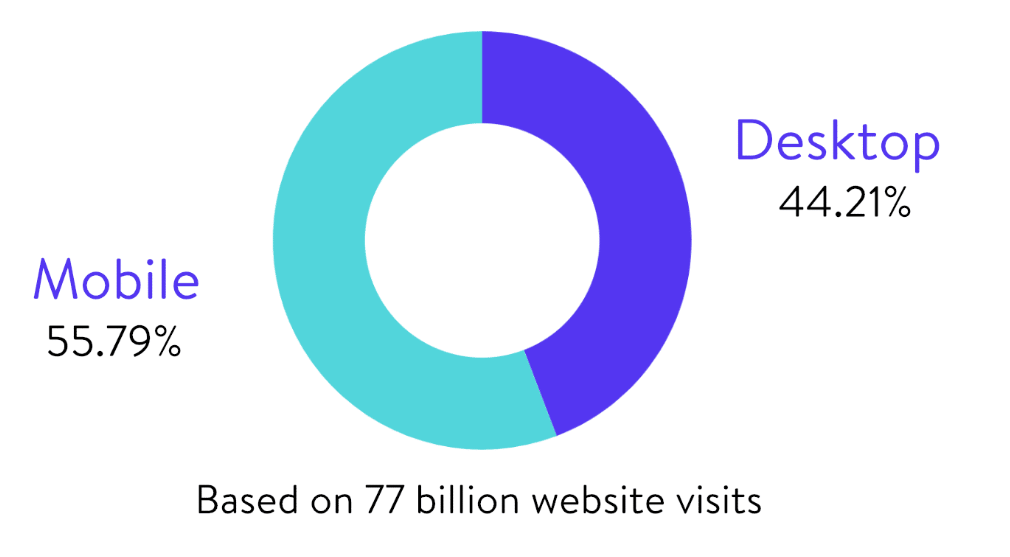
Conclusion
Embracing website performance optimization isn't just a tech-savvy move; it's a strategic one. Implementing these hacks can make you stand out among millions of websites competing for visibility and traffic. Every second shaved off your load time can skyrocket user engagement and, in turn, conversions. As user satisfaction grows, so does your return on investment. It's a win-win.
Among other discussed hacks, picking the right hosting provider is like choosing your website's foundation. A top-notch host ensures your site loads swiftly, remains accessible and can handle traffic surges. Plus, with modern tech and robust security, they protect and optimize your website.
Why let sluggish load times or choppy user experiences be the bottleneck to your online business success? With the right optimizations, you're not just building a website; you're crafting an experience.
Curious about how you can further enhance your web presence with a robust CMS? Explore what Concrete CMS has in store for you. Our robust CMS streamlines content management, and optimizes load times. Built-in caching and seamless CDN integrations will further boost performance so that you can elevate your website to its peak potential.
Visit us now, book a demo, and optimize today.
